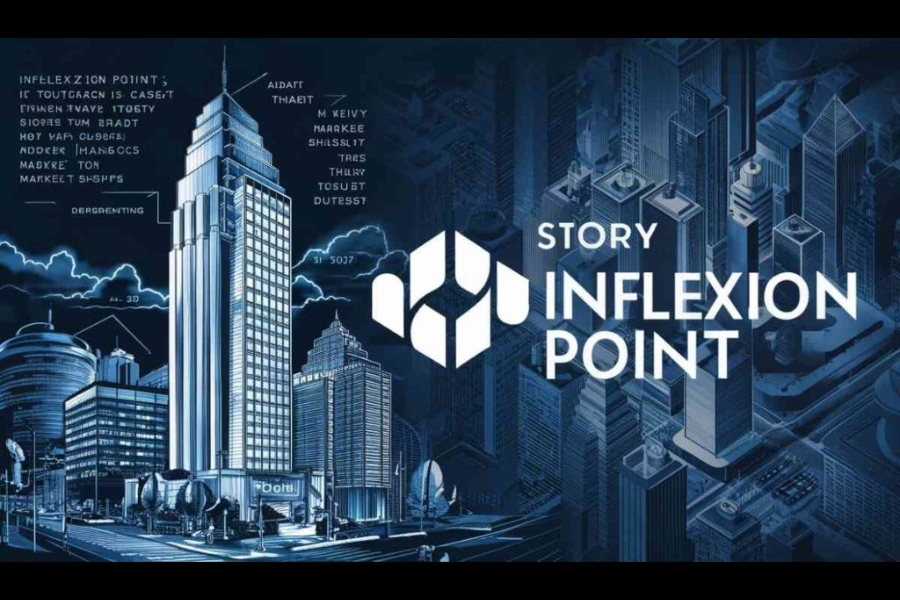Inflexon Point Explained: Navigating Critical Moments in Strategy and Change
The Power of the Inflexon Point in Business Transformation
In the rapidly changing landscape of business, change is the only constant. As markets evolve and consumer preferences shift, companies often reach critical junctures—these pivotal moments are known as inflexon points. Recognizing and understanding these points can be the key to thriving amidst uncertainty rather than succumbing to stagnation.
The concept of the inflexon point is not solely for seasoned business executives; it’s essential for anyone involved in shaping the future of an organization. Whether you’re an entrepreneur or a team member within a larger enterprise, grasping this idea empowers you to navigate transitions effectively. In this exploration, we will delve into the essence of inflexon points, their importance in crafting resilient business strategies, and their impact on growth trajectories across diverse industries.
Defining the Inflexon Point: A Crucial Business Intersection
An inflexon point signifies a crucial turning point in a business’s journey, where significant change is imminent—this can either steer growth or signal decline. Understanding this concept is vital for any organization aspiring to achieve long-term success.
Within the realm of business strategy, an inflexon point acts as a signal that conditions have changed—these changes may stem from market dynamics, technological advancements, or shifts in consumer behavior. Recognizing these moments allows companies to adapt their strategies effectively, enabling them to pivot and harness potential opportunities while mitigating the risks associated with stagnation.
Successfully navigating an inflexon point can unveil transformative prospects. Those who can identify and respond proactively to these pivotal moments stand to gain significant advantages, distinguishing themselves from competitors who fail to adapt.
The Impact of Inflexon Points on Business Operations
Inflexon points can dramatically reshape the trajectory of a business. They often indicate essential moments where change is not only possible but vital for survival. Companies at these crossroads must make crucial decisions that can determine their future success or failure.
When an inflexon point arises, organizations may need to embrace new technologies, pivot product lines, or rethink their market strategies. Such moments present unique opportunities for innovation, enabling businesses to leverage emerging trends to their advantage.
Conversely, neglecting the signs of change can lead to stagnation. Companies that remain entrenched in outdated practices risk losing their relevance in fast-evolving markets. Navigating these critical junctures requires agility, foresight, and the ability to analyze data to anticipate shifts in the business landscape.
Success Stories: Companies that Capitalized on Inflexon Points
Several companies serve as prime examples of successfully navigating their inflexon points. Apple, for instance, dramatically shifted its focus from computers to mobile devices, a move that revolutionized the technology industry. The launch of the iPhone in 2007 not only transformed communication but also solidified Apple’s dominance in the market.
Similarly, Netflix confronted a significant inflexon point when it transitioned from DVD rentals to streaming services. This bold decision expanded its reach and positioned Netflix as a leader in digital entertainment, fundamentally altering how audiences consume media.
Amazon offers another noteworthy example. Initially an online bookstore, Amazon embraced diverse business models over the years, including e-commerce and cloud computing, enabling exponential growth and setting industry standards across various sectors.
These success stories illustrate how recognizing and adapting during crucial moments can lead to transformative success and sustained relevance in competitive markets.
Strategies for Identifying and Navigating Inflexon Points
To identify inflexon points, businesses must develop a keen awareness of market trends and internal dynamics. Start by analyzing data patterns to detect shifts in consumer behavior, sales performance, or emerging technologies that could signal impending change.
Regular engagement with your team is crucial. Brainstorming sessions can uncover insights that data alone may not reveal, encouraging open dialogue about potential disruptions and innovative ideas.
Staying informed about industry developments is essential. Following thought leaders and subscribing to relevant publications can provide valuable context about what competitors are doing and where the market is headed.
Once an inflexon point is identified, prompt and thoughtful action is necessary. Create a flexible action plan that allows for adjustments as new information emerges. Testing new strategies on a smaller scale can help minimize risks while exploring opportunities.
Fostering a culture of adaptability within your organization is also vital. Encourage employees to embrace change rather than resist it; this mindset can transform challenges into avenues for growth.
Common Pitfalls to Avoid During Inflexon Points
Navigating an inflexon point can be daunting, and businesses often fall into common traps. One major pitfall is rushing decisions without thorough analysis, leading to missteps that can derail progress.
Ignoring feedback is another mistake. Stakeholders, employees, and customers provide invaluable insights during transitional periods. Disregarding their input means missing critical clues on how best to adapt.
Resistance to change is also a significant hurdle. Employees may cling to established practices out of fear of the unknown. Cultivating a culture that values flexibility can ease transitions and promote acceptance of new approaches.
Additionally, overlooking market trends can be detrimental. Companies must remain vigilant about external factors influencing their industry to avoid becoming obsolete.
Lastly, not having a clear vision for post-inflexion strategies can result in confusion and missed opportunities. A well-defined roadmap is essential to guide teams through uncertainty and towards successful outcomes.
By recognizing and addressing these pitfalls, organizations can better navigate the complexities of inflexon points and emerge stronger in an ever-evolving business landscape.
FAQs:
- What is an inflexon point?
An inflexon point is a critical juncture in a business where significant change is necessary, often indicating a shift in strategy to either capitalize on growth opportunities or avoid decline. - Why are inflexon points important in business?
They serve as signals that prompt organizations to adapt their strategies, embrace innovation, and pivot in response to market changes, thus ensuring long-term success and competitiveness. - How can businesses identify an inflexon point?
Businesses can identify inflexon points by analyzing market trends, consumer behavior, sales data, and staying informed about industry developments that indicate impending change. - What are common pitfalls when navigating inflexon points?
Common pitfalls include rushing decisions without adequate analysis, ignoring stakeholder feedback, resisting change, overlooking market trends, and lacking a clear post-inflexion strategy. - Can you provide examples of companies that successfully navigated inflexon points?
Yes, notable examples include Apple, which shifted focus to mobile devices; Netflix, which transitioned from DVD rentals to streaming; and Amazon, which expanded from an online bookstore to a multifaceted e-commerce and cloud computing giant.
Facts:
- Definition: An inflexon point represents a decisive moment when a business must change its direction to maintain relevance or capitalize on new opportunities.
- Impact on Growth: Successfully navigating an inflexon point can lead to transformative success and enhanced market positioning for businesses.
- Data-Driven Decisions: Identifying inflexon points relies heavily on data analysis, market research, and understanding consumer trends.
- Cultural Shift: Fostering a culture of adaptability within organizations is essential for successfully managing inflexon points.
- Historical Context: Companies like Apple, Netflix, and Amazon have transformed their business models at inflexon points, showcasing the potential for innovation and growth.
Summary:
Inflexon points are crucial moments in business that signify the need for significant change to seize growth opportunities or prevent decline. By understanding and identifying these pivotal junctures, organizations can adapt their strategies to meet evolving market conditions. Successful navigation of inflexon points has been exemplified by companies such as Apple, Netflix, and Amazon, which have leveraged their critical transitions to achieve substantial success. However, businesses must also be wary of common pitfalls, including rushed decisions and resistance to change, to effectively maneuver through these transformative phases.
Discover beauty, style, and lifestyle inspiration at Glamouruer.co.uk.






